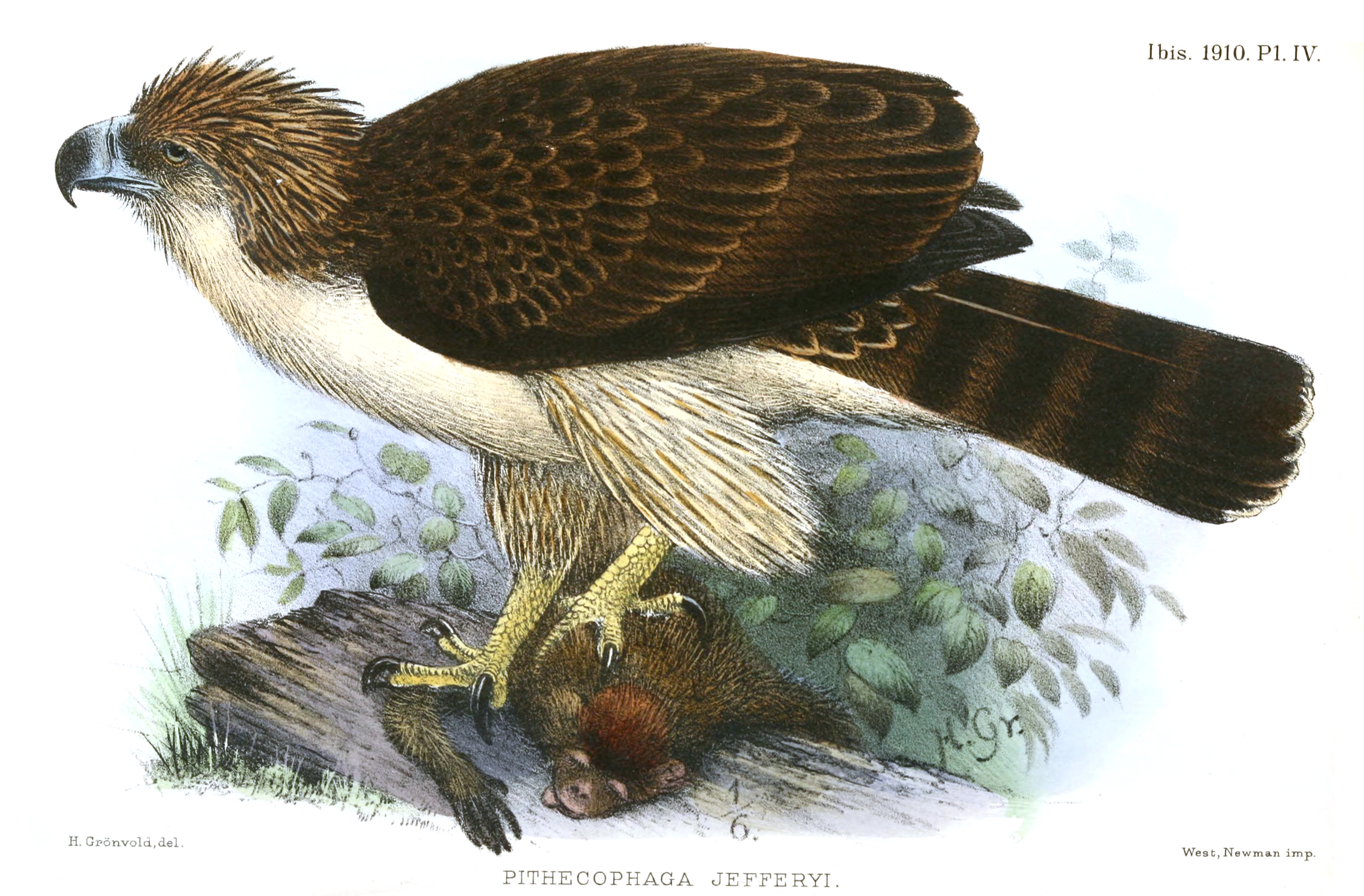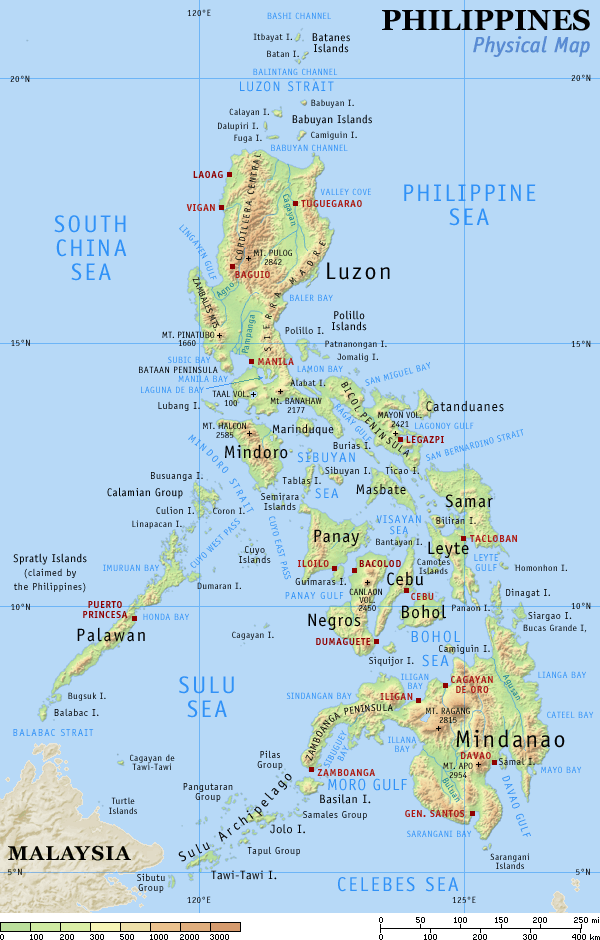|
Mount Inayawan Range Natural Park
The Mount Inayawan Range Natural Park (also ''Mount Iniaoan Range Natural Park'') is a protected area of forested mountains in the Northern Mindanao region of the Philippines. The park encompasses the mountain range also known as Mount Iniaoan located in the landlocked municipality of Nunungan in Lanao del Norte and covers a total area of with a buffer zone of . The area was officially designated as a natural park on 30 July 2007 through Proclamation No. 1344 signed by President Gloria Arroyo. It is a critical watershed area and the largest remaining rainforest in Lanao del Norte. Description The park is situated in the barangay of Inayawan in Nunungan, some southwest from the city of Iligan near the border with the province of Lanao del Sur and some north from Magapu Point and Illana Bay. It is centered around Mount Iniaoan, a conical mountain which is the highest in the province at an altitude of . Lake Nunungan at is one of the highest lakes in the Philippines and is also ... [...More Info...] [...Related Items...] OR: [Wikipedia] [Google] [Baidu] |
Lanao Del Norte
Lanao del Norte ( Cebuano: ''Amihanang Lanao''; tl, Hilagang Lanao; Maranao: ''Pangotaraan Ranao''), officially the Province of Lanao del Norte, is a province in the Philippines located in the Northern Mindanao region. Its capital is Tubod. The province borders Lanao del Sur to the southeast, Zamboanga del Sur to the west, Illana Bay to the southwest, Iligan Bay to the north, Misamis Oriental to the northeast, and is separated from Misamis Occidental by Panguil Bay to the northwest. According to the 2020 census, the province has a total population of 722,902 people. Situated within Lanao del Norte is the highly urbanized city of Iligan, which is governed independently from the province. History The province of Lanao existed from 1914 until 1959. In 1959, Republic Act No. 222 was passed by the Philippine Congress, partitioning Lanao into two provinces: Lanao del Norte and Lanao del Sur. The new province was inaugurated on July 4, with Iligan City as its capital. The ... [...More Info...] [...Related Items...] OR: [Wikipedia] [Google] [Baidu] |
Philippine Eagle
The Philippine eagle (''Pithecophaga jefferyi''), also known as the monkey-eating eagle or great Philippine eagle, is a critically endangered species of eagle of the family Accipitridae which is endemic to forests in the Philippines. It has brown and white-colored plumage, a shaggy crest, and generally measures in length and weighs . The Philippine eagle is considered the largest of the extant eagles in the world in terms of length and wing surface area, with only Steller's sea eagle and the Harpy eagle being larger in terms of weight and bulk. It has been declared the national bird of the Philippines.Kennedy, R. S., Gonzales, P. C.; Dickinson, E. C.; Miranda, H. C. Jr. and Fisher, T. H. (2000). ''A Guide to the Birds of the Philippines.'' Oxford University Press, New York. The most significant threat to the species is loss of habitat, a result of high levels of deforestation throughout most of its range. Killing a Philippine eagle is a criminal offence, punishable by ... [...More Info...] [...Related Items...] OR: [Wikipedia] [Google] [Baidu] |
Geography Of Lanao Del Norte
Geography (from Greek: , ''geographia''. Combination of Greek words ‘Geo’ (The Earth) and ‘Graphien’ (to describe), literally "earth description") is a field of science devoted to the study of the lands, features, inhabitants, and phenomena of Earth. The first recorded use of the word γεωγραφία was as a title of a book by Greek scholar Eratosthenes (276–194 BC). Geography is an all-encompassing discipline that seeks an understanding of Earth and its human and natural complexities—not merely where objects are, but also how they have changed and come to be. While geography is specific to Earth, many concepts can be applied more broadly to other celestial bodies in the field of planetary science. One such concept, the first law of geography, proposed by Waldo Tobler, is "everything is related to everything else, but near things are more related than distant things." Geography has been called "the world discipline" and "the bridge between the human and ... [...More Info...] [...Related Items...] OR: [Wikipedia] [Google] [Baidu] |
Natural Parks Of The Philippines
This is a list of protected areas of the Philippines administered by the Department of Environment and Natural Resources (DENR)'s Biodiversity Management Bureau under the National Integrated Protected Areas System (NIPAS) Act of 1992. As of 2020, there are 244 protected areas in the Philippines covering a total area of about – 15.4% of the Philippines' total area. History The first important legislation that formed the basis of the current system of national parks and protected areas in the Philippines is Act No. 648, enacted in 1903 by the Philippine Commission. This act authorized the civil governor to "reserve for civil public purposes, and from sale or settlement, any part of the public domain not appropriated by law for special public purposes." A total of eight national reserves had been established on July 26, 1904, pursuant to this law. These are the Lamao Forest Reserve in Bataan, Mariquina Reserve in Rizal, Angat River Reserve in Bulacan, Caliraya Falls Rese ... [...More Info...] [...Related Items...] OR: [Wikipedia] [Google] [Baidu] |
Mindanao Hornbill
The Mindanao hornbill (''Penelopides affinis''), sometimes called the Mindanao tarictic hornbill, is a medium-small species of hornbill found in the canopy of rainforests on Mindanao, Dinagat, Siargao and Basilan in the southern Philippines. As is the case with all Philippine tarictic hornbills, it has been considered a subspecies of '' P. panini''. The Samar hornbill is often included as a subspecies of the Mindanao hornbill. Subspecies There are two subspecies: * ''P. a. affinis'' (the nominate subspecies). Found on the islands of Mindanao, Dinagat and Siargao. * ''P. affinis basilanica''. Found on the island of Basilan. Behavior It is social and often seen in pairs or small groups. These birds are noisy, emitting an incessant ''ta-rik-tik'' call, hence the name. Despite their noise they are difficult to find, being well camouflaged by the dense foliage. Diet The principal food of Mindanao hornbill is fruit. It also eats insects, beetles, ants and earthworms (rarely). ... [...More Info...] [...Related Items...] OR: [Wikipedia] [Google] [Baidu] |
Philippine Warty Pig
The Philippine warty pig (''Sus philippensis'') is one of four known species in the pig genus (''Sus'') endemic to the Philippines. The other three endemic species are the Visayan warty pig (''S. cebifrons''), Mindoro warty pig (''S. oliveri'') and the Palawan bearded pig (''S. ahoenobarbus''), also being rare members of the family Suidae. Philippine warty pigs have two pairs of warts, with a tuft of hair extending outwards from the warts closest to the jaw. It has multiple native common names, but it is most widely known as ''baboy damo'' ("bush pig") in Tagalog. Subspecies There are at least two recognized subspecies of the Philippine warty pig: * ''S. p. philippensis'' (from Luzon and nearby islands) * ''S. p. mindanensis'' (from Mindanao) Distribution and habitat In general, the original distribution of ''S. philippensis'' covered the western islands of the Philippines, while the original distribution of ''S. cebifrons'' covered the central and eastern islands. Specificall ... [...More Info...] [...Related Items...] OR: [Wikipedia] [Google] [Baidu] |
White-collared Kingfisher
The collared kingfisher (''Todiramphus chloris'') is a medium-sized kingfisher belonging to the subfamily Halcyoninae, the tree kingfishers. It is also known as the white-collared kingfisher, black-masked kingfisher or mangrove kingfisher. It has a wide range extending from the Red Sea across southern Asia to Polynesia. A number of subspecies and subspecies groups have been split from this species including the Pacific kingfisher, the islet kingfisher, the Torresian kingfisher, the Mariana kingfisher, and the Melanesian kingfisher. Taxonomy The collared kingfisher was described by the French polymath Georges-Louis Leclerc, Comte de Buffon in his ''Histoire Naturelle des Oiseaux'' in 1780. The bird was also illustrated in a hand-coloured plate engraved by François-Nicolas Martinet in the ''Planches Enluminées D'Histoire Naturelle''. This was produced under the supervision of Edme-Louis Daubenton to accompany Buffon's text. Neither the plate caption nor Buffon's description i ... [...More Info...] [...Related Items...] OR: [Wikipedia] [Google] [Baidu] |
Mindanao Scops Owl
The Mindanao scops owl (''Otus mirus'') is an owl endemic to Mindanao island in the Philippines The Philippines (; fil, Pilipinas, links=no), officially the Republic of the Philippines ( fil, Republika ng Pilipinas, links=no), * bik, Republika kan Filipinas * ceb, Republika sa Pilipinas * cbk, República de Filipinas * hil, Republ .... References ;Notes ;SourcesBirdLife Species Factsheet - Mindanao Scops-owlOwl pages Mindanao scops owl Birds of Mindanao Mindanao scops owl Taxa named by Sidney Dillon Ripley {{Strigiformes-stub ... [...More Info...] [...Related Items...] OR: [Wikipedia] [Google] [Baidu] |
Mindanao Flying Squirrel
The Mindanao flying squirrel (''Petinomys mindanensis'') is a common species of squirrel that is endemic to the Philippines The Philippines (; fil, Pilipinas, links=no), officially the Republic of the Philippines ( fil, Republika ng Pilipinas, links=no), * bik, Republika kan Filipinas * ceb, Republika sa Pilipinas * cbk, República de Filipinas * hil, Republ .... References {{Taxonbar, from=Q1765159 Mammals described in 1939 Petinomys ... [...More Info...] [...Related Items...] OR: [Wikipedia] [Google] [Baidu] |
Philippine Deer
The Philippine deer (''Rusa marianna''), also known as the Philippine sambar or Philippine brown deer, is a vulnerable deer species endemic to the Philippines. It was first described from introduced populations in the Mariana Islands, hence the specific name. Taxonomy ''Cervus mariannus'' was the scientific name proposed by Anselme Gaëtan Desmarest in 1822. It was subordinated to the genus ''Rusa''. Four subspecies are currently recognized: * ''R. m. marianna'' in Luzon biogeographic region * ''R. m. barandana'' in Mindoro * ''R. m. nigella'' in isolated upland areas of Mindanao * ''R. m. nigricans'' in lowland sites of Mindanao Characteristics The Philippine brown deer is relatively smaller than its relative, the sambar deer. Its head-and-body length and shoulder height measures , and , respectively. Its weight usually ranges from 40 to 60 kg. Generally, its color is brown with white tail underside. Antlers are common among males which measures 20 to 40 cm. Va ... [...More Info...] [...Related Items...] OR: [Wikipedia] [Google] [Baidu] |
Illana Bay
Illana Bay, also known as the Iranun Bay, is a large bay of the Moro Gulf, off the southwestern coast of Mindanao island in the Philippines. Illana Bay and Moro Gulf form part of the Celebes Sea The Celebes Sea, (; ms, Laut Sulawesi, id, Laut Sulawesi, fil, Dagat Selebes) or Sulawesi Sea, of the western Pacific Ocean is bordered on the north by the Sulu Archipelago and Sulu Sea and Mindanao Island of the Philippines, on the east b .... See also * Sibuguey Bay — ''also of Moro Gulf'' Bays of the Philippines Bodies of water of the Celebes Sea Landforms of Zamboanga del Sur Landforms of Lanao del Norte Landforms of Lanao del Sur Landforms of Maguindanao Landforms of Maguindanao del Norte {{Philippines-geo-stub ... [...More Info...] [...Related Items...] OR: [Wikipedia] [Google] [Baidu] |
Philippines
The Philippines (; fil, Pilipinas, links=no), officially the Republic of the Philippines ( fil, Republika ng Pilipinas, links=no), * bik, Republika kan Filipinas * ceb, Republika sa Pilipinas * cbk, República de Filipinas * hil, Republika sang Filipinas * ibg, Republika nat Filipinas * ilo, Republika ti Filipinas * ivv, Republika nu Filipinas * pam, Republika ning Filipinas * krj, Republika kang Pilipinas * mdh, Republika nu Pilipinas * mrw, Republika a Pilipinas * pag, Republika na Filipinas * xsb, Republika nin Pilipinas * sgd, Republika nan Pilipinas * tgl, Republika ng Pilipinas * tsg, Republika sin Pilipinas * war, Republika han Pilipinas * yka, Republika si Pilipinas In the recognized optional languages of the Philippines: * es, República de las Filipinas * ar, جمهورية الفلبين, Jumhūriyyat al-Filibbīn is an archipelagic state, archipelagic country in Southeast Asia. It is situated in the western Pacific Ocean and consists of aro ... [...More Info...] [...Related Items...] OR: [Wikipedia] [Google] [Baidu] |




